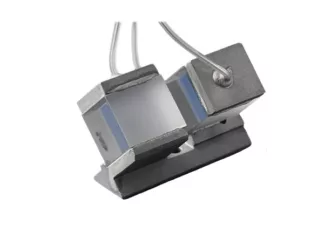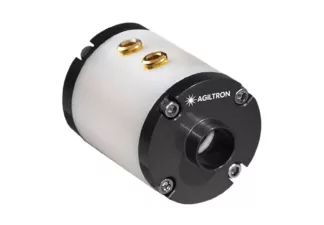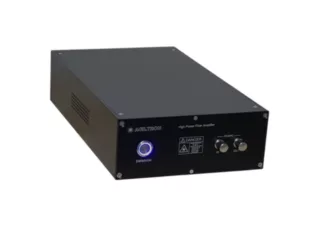Shortwave/Large Aperture Free Space Electro-Optical Modulators
(350nm to 2 μm, 2mm to 10mm aperture, Vp as low as 800V, up to kW optical power)
Passing shortwave or high optical power light through an electro-optical crystal generates charge build-up and photorefractive defects, which degrade the electro-optical effects. To overcome these deficiencies, we offer two families of Pockels cells using crystals of the highest purity and most optically stable atomic structures. Rubidium titanyle phosphate (RTP) is the best electro-optical material known to date, offering salient benefits of high optical damage threshold, short wavelength durability, low distortion, low driving voltage, fast modulation rates, and exceptional stability. RTP is a unique electro-optical material that is free of the deficiencies associated with other electro-optic materials, including charge build-up induced degradation and photorefractive induced defects when passing shortwave or high optical power light through it, also piezoelectric induced ringing to the signals. Our RTP Pockels cells are made using a matched pair of crystals to counteract RTP’s index refraction thermal drift, enhancing the device’s environmental stability. RTP Pockels cells have the electric field applied perpendicular to the direction of the light path, resulting in uniform electro-optic response with minimum distortion to the laser’s optical mold properties and low driving voltage. On the other hand, KD*P-based Pockels cells are a cost-effective solution for general applications that require large apertures. Since KD*P Pockels cells have the electric field applied along the direction of the light path, they need higher driving voltage than RTP Pockels cells. KD*P is also Hygroscopic. We provide electronic drivers to meet various applications. For volume order discounts or technical questions, contact



